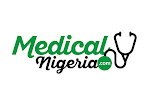The best way to protect yourself is to ensure you wash your hands
always, it is one of the most effective way of preventing the onset
of infectious diseases.
Below are some essential hygiene tips:
-
Everyone understands that washing of hands after the use of toilet is a necessity but, so far people who routinely cleanse their hands after toilet use are not more than 50%, and it is done the right way by nobody. Wash with soap and water for thirty to forty five seconds. Even better, you scrub and lather those fingernails and rinse – then repeat.
- Ensure you desist from the temptation of ‘multitasking’. That is one way to cross contaminate infection. Do not use the same sponge or rag cleanse everything in the house – kitchen, bathroom, parlor e.t.c
-
Frequent replacement of sponge is a necessity, the reason being that the warm, wet or damp nature of sponge traps particle of food, which leads to bacteria flourishing. Bacteria reproduces fast.
-
Your wastebin or dustbin must be emptied frequently. It is a known fact that dangerous germs like salmonella is known to thrive in wastebins. As a routine, wastebins should be emptied once a month. Leaking of wastebag is also prevalent in homes, this means bacteria can spread to the house, so it is important to disinfect your garbage.
- As a rule of thumb, frequently change your towels. Humans shed about a million skin cells per hour. Your towel can serve as a habitat for both the cells and the bacteria, leaving them in a damp place can make them a good ‘petri dish’ for bacteria to thrive. Towels should be hung in an open air after use and they should be replaced after four uses.
-
Toothbrush are vulnerable to germs, ensure they remain protected. Store your toothbrush in an enclosed place. Ensure you cleanse it with everyday with peroxide or mouthwash.

Comments
Post a Comment
Premium, Professional CV Revamp and Rewrite services with a FREE Cover Letter from MedicalNigeria at #3,500! WhatsApp- 07038844295 to get Started!